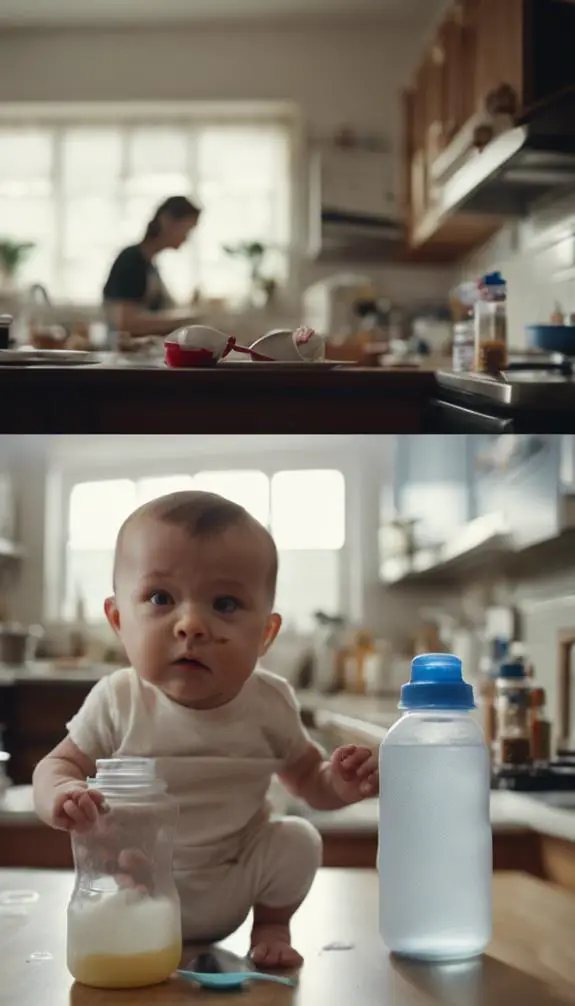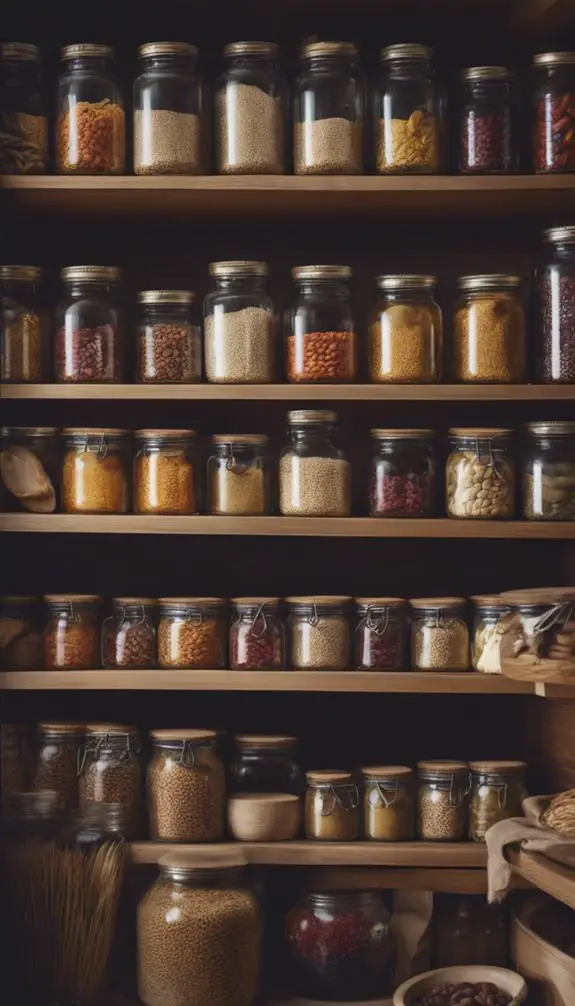When you're facing a baby formula shortage, having knowledge of how to create a substitute that meets your little one's nutritional needs is vital. You'll want to start by combining the right amounts of water, salt, and bicarbonate to provide vital electrolytes and minerals. But that's just the beginning – you'll also need to add carbohydrates, protein, and fat sources to guarantee a balanced mix of nutrients. As you venture into this process, you'll likely have questions about the best ingredients to use and how to store the formula safely. Let's break it down step by step to guarantee you're prepared to give your baby the nutrition they deserve.
Summary
- Identify suitable formula alternatives with similar protein sources and nutrient profiles, considering baby's age, weight, and allergies/sensitivities.
- Gather ingredients and supplies, including lactose-free milk substitute, whey protein powder, healthy fats, and sterilization equipment.
- Mix the formula base with essential electrolytes and minerals, then add protein and fat sources, and customize to meet the baby's specific needs.
- Ensure the formula provides a balance of carbohydrates, fiber, electrolytes, and vitamins, and prioritize vitamin D, E, A, C, and K for ideal nutrition.
- Follow safe mixing and storage practices, including sterilizing equipment, using accurate measuring practices, and storing the formula in an airtight container.
Understanding Emergency Formula Needs
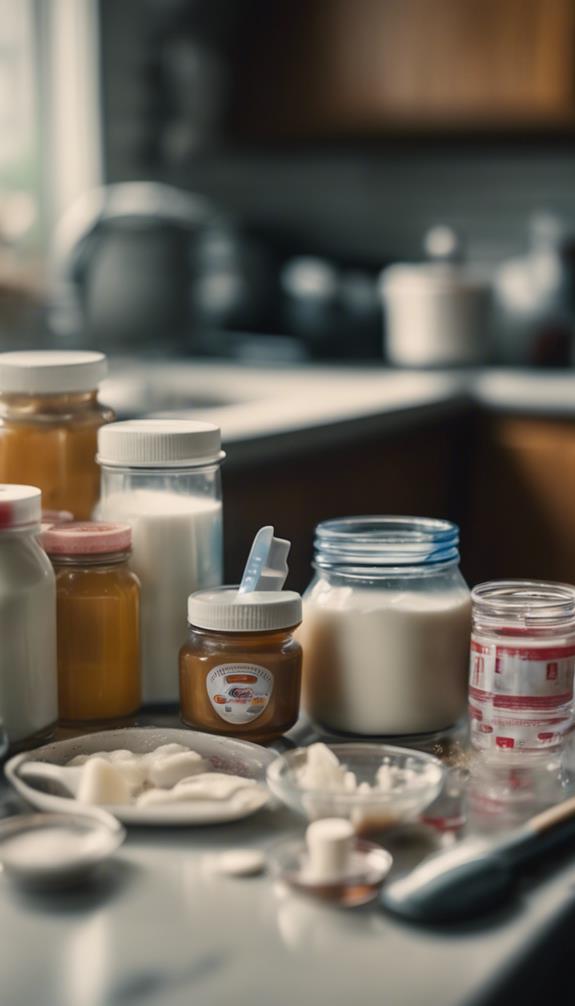
When a baby's usual formula is unavailable, it's crucial to understand their emergency formula needs to safeguard their health and well-being.
You need to know what alternatives are safe and suitable for your little one. In an emergency, you'll want to weigh formula options that closely match your baby's usual formula.
Look for formulas with similar protein sources, such as cow's milk or soy, and identical nutrient profiles. Formula deliberations include the baby's age, weight, and any allergies or sensitivities.
You should also think about the shelf life and storage requirements of the emergency formula. By understanding these factors, you can make an informed decision and certify your baby receives the nutrients they need during a formula shortage.
Gathering Essential Ingredients
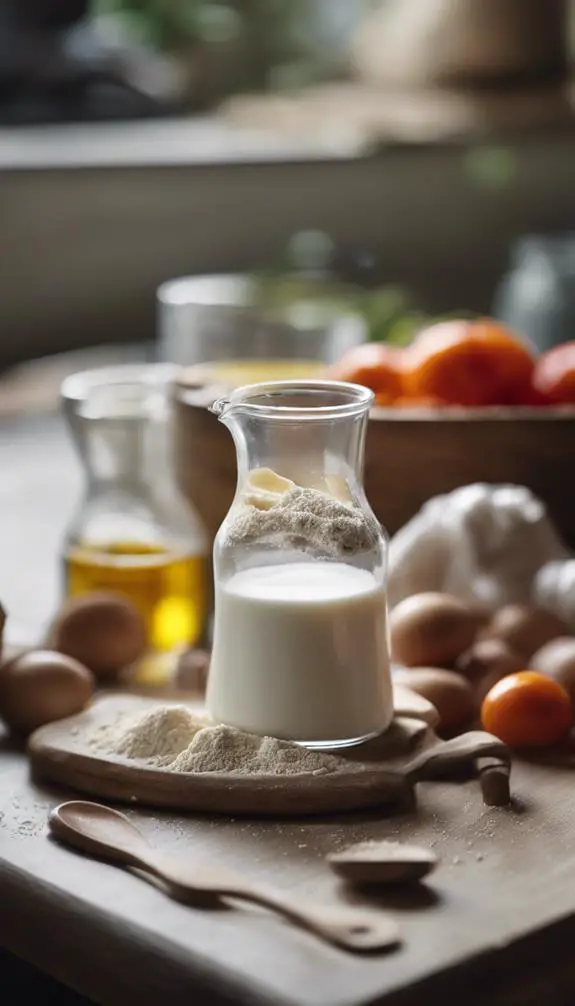
Get ready to stock up on the essentials by gathering the necessary ingredients to make an emergency baby formula.
You'll need a few fundamental items to create a nutritionally sound mix.
First, focus on formula basics like carbohydrates, proteins, and fats.
For carbohydrates, you'll need a lactose-free milk substitute, such as evaporated milk or goat's milk.
For proteins, opt for whey protein powder or egg yolks.
Healthy fats can come from sources like coconut oil or olive oil.
Certify ingredient quality by choosing unflavored, unsweetened, and organic options whenever possible.
Mixing the Formula Base
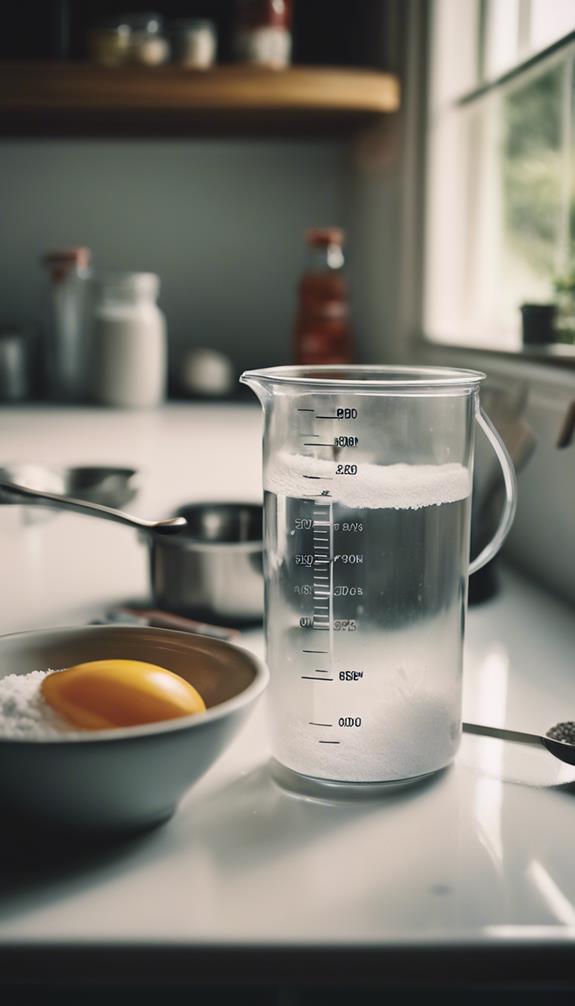
You've gathered the necessary ingredients, now it's time to combine them into a formula base that's both nourishing and safe for your baby.
To achieve the right formula consistency, start by mixing 2 cups of water with 1/2 teaspoon of salt and 1/4 teaspoon of bicarbonate. This base will provide essential electrolytes and minerals.
Next, add 1/2 cup of lactose or corn syrup to provide carbohydrates for energy. You can customize this formula base to meet your baby's specific needs by adjusting the ratio of water to carbohydrates or adding other ingredients as needed.
Remember to stir well to confirm a smooth, consistent mixture. This formula base will serve as the foundation for your emergency baby formula, providing a safe and nourishing start for your little one.
Adding Protein and Fat Sources
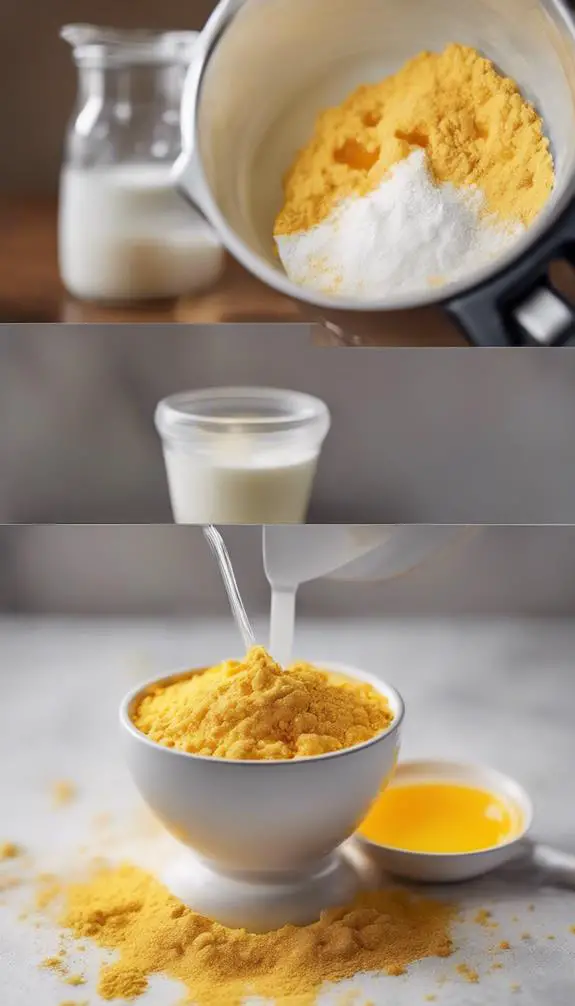
You'll now need to add essential protein and fat sources to your emergency baby formula.
You can do this by incorporating fat-rich food additives, such as heavy cream or half-and-half, and protein powder sources, like whey or egg protein.
Additionally, consider adding nutrient-dense oils, like coconut or olive oil, to provide crucial fatty acids.
Fat-Rich Food Additives
In a pinch, adding fat-rich food additives to your emergency baby formula can be a lifesaver, literally providing sustenance to a hungry infant.
You'll want to focus on ingredients that enhance fat absorption, ensuring your little one gets the nutrients they need. Rich emulsions like egg yolks or heavy cream can be game-changers.
When mixed with other ingredients, they create a formula that's both nourishing and easy to digest. You can also try adding small amounts of melted coconut oil or ghee to boost the fat content.
Just be sure to mix well and test the temperature before feeding your baby. With these fat-rich additives, you'll be providing your infant with a nutrient-dense formula that supports their growth and development.
Protein Powder Sources
When crafting your emergency baby formula, incorporating protein powder sources can substantially enhance its nutritional value, especially when combined with fat-rich additives.
You'll want to choose a high-quality protein powder that's gentle on your baby's digestive system. Pea protein is an excellent option, as it's hypoallergenic and easy to digest.
If you're looking for whey alternatives, consider goat's milk or egg-based protein powders. These options are rich in essential amino acids and can help support your baby's growth and development.
When selecting a protein powder, verify it's unflavored and unsweetened to avoid adding unnecessary ingredients to your formula.
Nutrient-Dense Oils
Formulate your emergency baby formula with nutrient-dense oils that not only provide essential fatty acids but also boost the protein content.
You'll want to choose oils rich in omega-3 and omega-6 fatty acids, which support brain development and overall growth.
Consider adding oils like flaxseed, chia seed, or walnut oil to your formula.
These oils are packed with essential fatty acids, which are vital for brain function and development.
Additionally, they provide a natural source of protein, making them an excellent addition to your emergency baby formula.
Incorporating Carbohydrates and Fiber
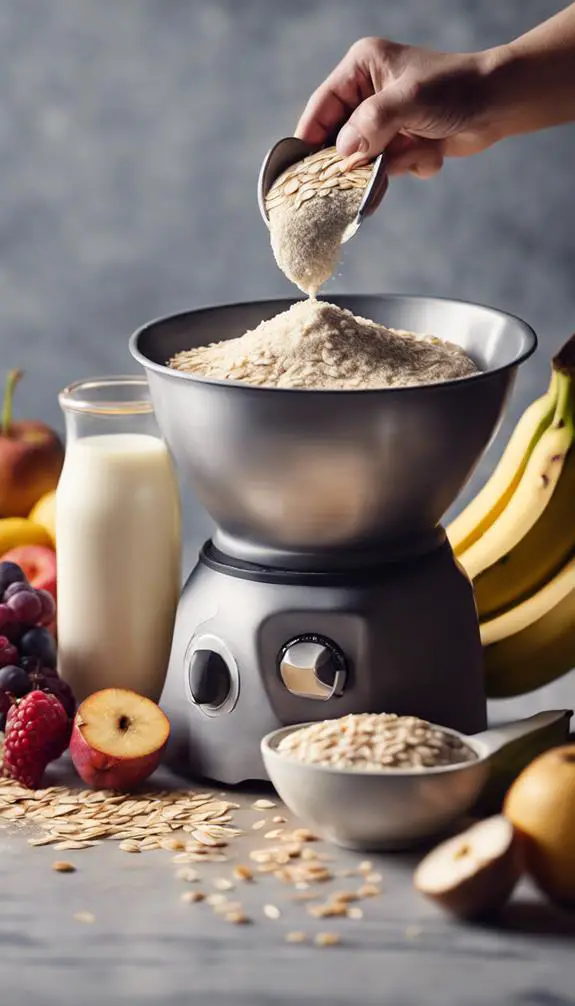
About 20-30% of your emergency baby formula's calories should come from carbohydrates, which provide energy for your baby's growth and development.
You'll want to choose carb alternatives that are easily digestible and won't cause digestive upset. Some good options include lactose-free maltodextrin, tapioca starch, and rice flour.
When it comes to fiber sources, you can add small amounts of gentle, easily tolerated options like oat fiber or almond flour. Be cautious not to overdo it, as too much fiber can be hard for little ones to digest.
Aim for a balance that supports healthy gut development and energy production. By incorporating these carbohydrates and fiber sources, you'll be providing your baby with a well-rounded, nutrient-rich emergency formula.
Electrolyte and Vitamin Enrichment
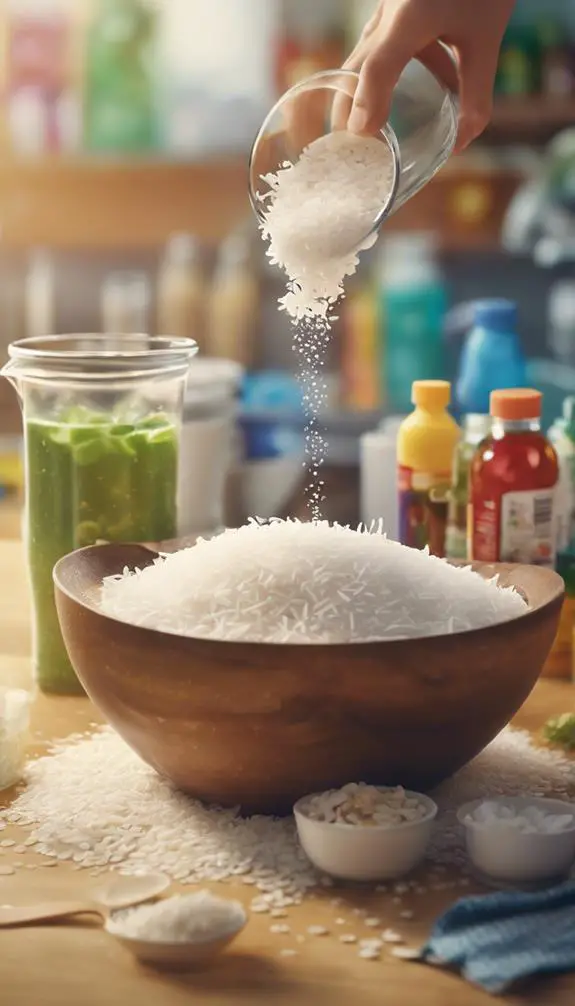
You'll need to guarantee your emergency baby formula provides essential electrolytes, like sodium and potassium, to maintain a healthy balance.
To achieve this, you can incorporate electrolyte-rich ingredients, such as coconut water or electrolyte powder, into your formula.
Additionally, you'll want to add vitamin-rich ingredients, like egg yolks or fortified oil, to provide vital nutrients for your baby's growth and development.
Electrolyte Balance Essentials
When creating an emergency baby formula, vital consideration must be given to prioritize electrolyte balance, as it plays a pivotal role in maintaining your baby's overall health.
Electrolytes, such as sodium, potassium, and chloride, regulate various bodily functions, including hydration, nerve function, and muscle contractions. An imbalance can lead to severe complications, like seizures, muscle weakness, and even organ failure.
You must make certain the formula you create provides the right balance of electrolytes to support your baby's growth and development. Focus on incorporating ingredients that naturally contain electrolytes, such as coconut water or electrolyte-rich broths, to achieve the perfect balance.
Vitamin Rich Ingredients
In crafting an emergency baby formula, incorporating vitamin-rich ingredients is essential to guarantee your baby receives the necessary nutrients they need to thrive.
Vitamin-rich ingredients provide formula benefits that support ideal baby nutrition.
You can add vitamin D-rich ingredients like cod liver oil or mushroom powder to secure your baby gets enough of this pivotal nutrient.
Vitamin E-rich ingredients like sunflower oil or wheat germ oil also play a fundamental role in supporting immune function and overall health.
When selecting ingredients, choose those that are rich in vitamins A, C, and K to provide a well-rounded nutritional profile.
Sterilizing Equipment and Workspace
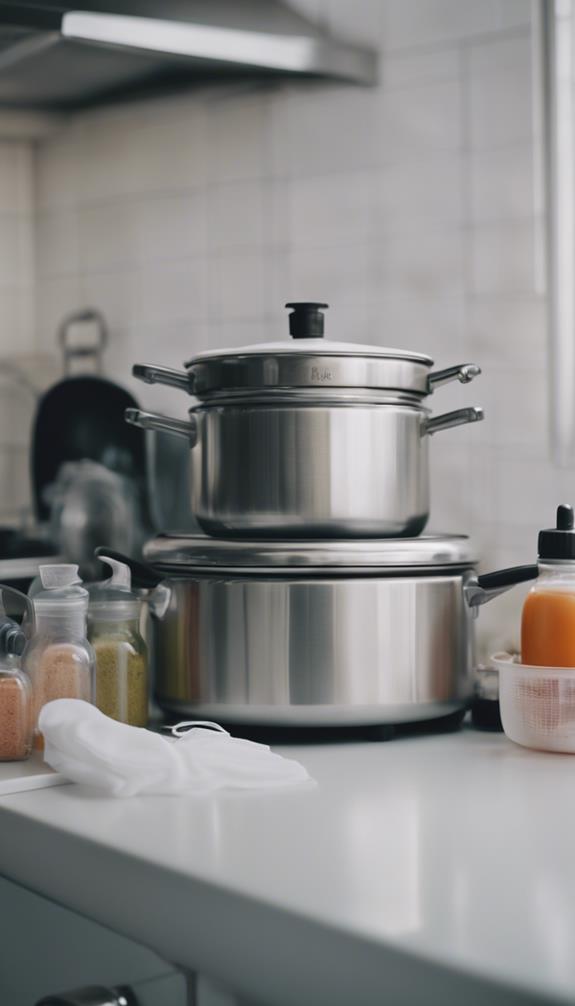
A crucial step in making emergency baby formula is preparing a sterile environment to minimize the risk of contamination.
You'll need to sanitize all equipment and surfaces that will come into contact with the formula.
Start by washing your hands thoroughly with soap and warm water.
Next, clean surfaces with a gentle detergent and warm water.
Then, sanitize these areas using a solution of one part white vinegar to four parts water or a commercial sanitizing product.
Make sure to rinse everything thoroughly to remove any residue.
Finally, lay out a clean towel or cloth to dry your equipment and workspace.
Preparing the Formula Ratio
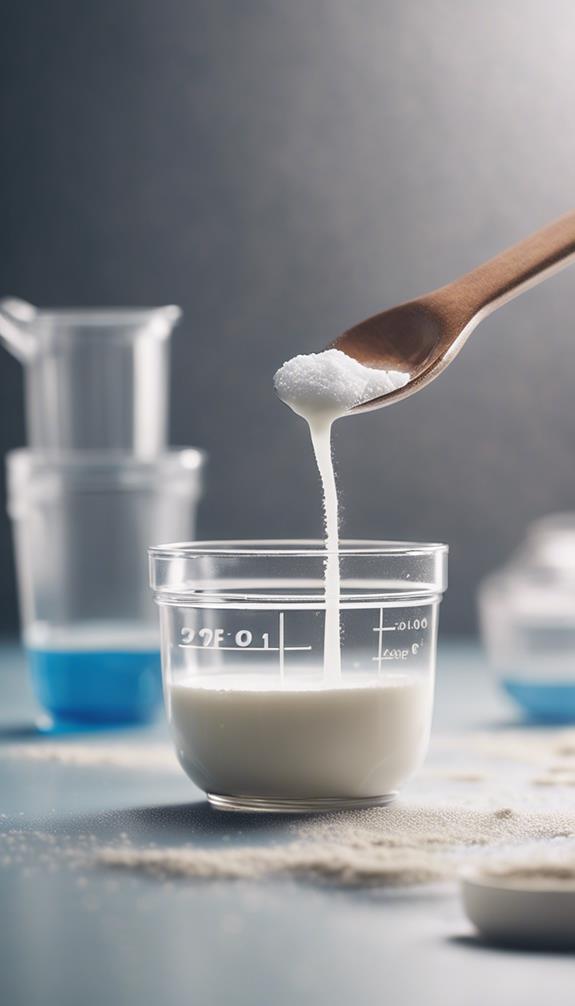
With your sterile environment in place, you're ready to move on to the next step: preparing the formula ratio.
This vital step guarantees your baby receives the necessary nutrients. The standard formula ratio is one part formula to 30 parts water.
However, you may need to make formula adjustments depending on your baby's age, weight, and individual needs. For instance, premature babies or those with certain health conditions may require a different ratio.
Consulting with a pediatrician or healthcare professional is vital to determine the ideal formula ratio for your baby. Remember, accuracy is key, so double-check your calculations to verify you're providing the best possible nutrition.
Combining Ingredients Safely
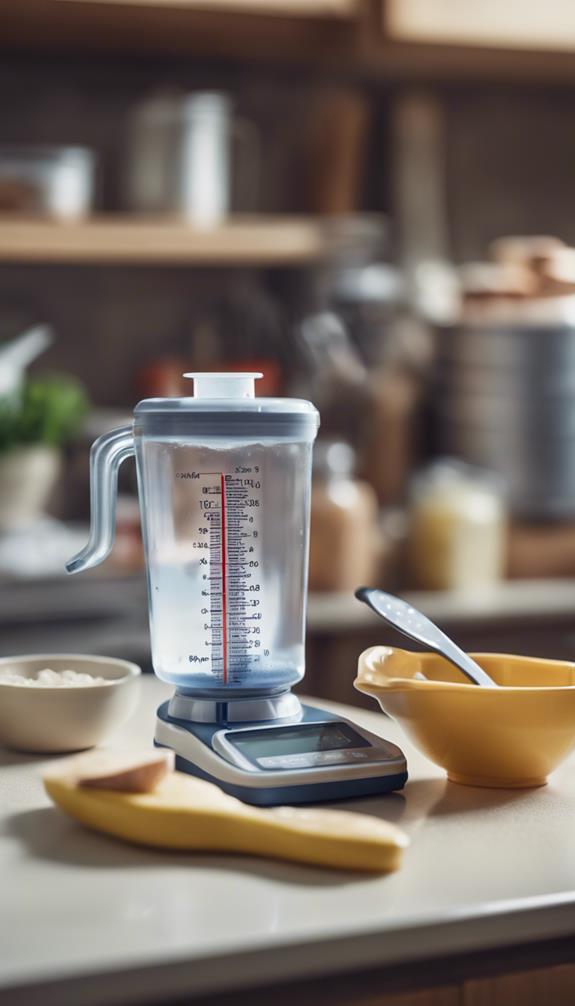
When combining ingredients to make emergency baby formula, you'll need to exercise extreme care to guarantee the mixture is safe for your baby to consume.
You'll want to follow safe measuring practices to avoid any errors, and double-check that your mixing ratios are spot on.
Additionally, don't forget to sterilize all equipment to prevent any contamination that could harm your baby.
Safe Measuring Practices
You'll need to accurately measure each ingredient to guarantee your emergency baby formula is nutritionally complete and safe for consumption.
To verify precise measurements, use accurate scales that can measure ingredients in small increments. Always measure ingredients on clean surfaces to prevent cross-contamination.
Make sure your hands are clean and dry before handling ingredients. Use a digital scale or measuring spoons specifically designed for measuring small quantities.
When measuring liquids, use a clean, dry measuring cup to prevent water spots or residue from affecting the measurement.
Mixing Ratios Matter
Now that you've verified accurate measurements, it's time to focus on combining ingredients safely.
Mixing ratios matter, and even slight deviations can lead to formula mistakes. The importance of ratio can't be overstated, as it directly affects the nutritional balance of the formula.
To guarantee a safe and healthy mix, follow the recommended ratio of water to powder or liquid ingredients. Never eyeball the measurements or make assumptions, as this can result in an unbalanced formula that may harm your baby.
Instead, carefully combine the ingredients according to the recipe, and double-check your work to avoid errors. By doing so, you'll create a safe and nutritious emergency baby formula that meets your baby's needs.
Sterilize All Equipment
Every piece of equipment that comes into contact with the emergency baby formula must be sterilized to prevent bacterial contamination.
You'll need to sanitize everything, including baby bottles, nipples, and utensils. There are several sterilization methods you can use, such as boiling, steaming, or using a dishwasher on the sanitize cycle.
You can also use a baby bottle sterilizer or sterilization tablets. Be sure to follow the manufacturer's instructions for the specific method you choose.
Storage and Handling Precautions
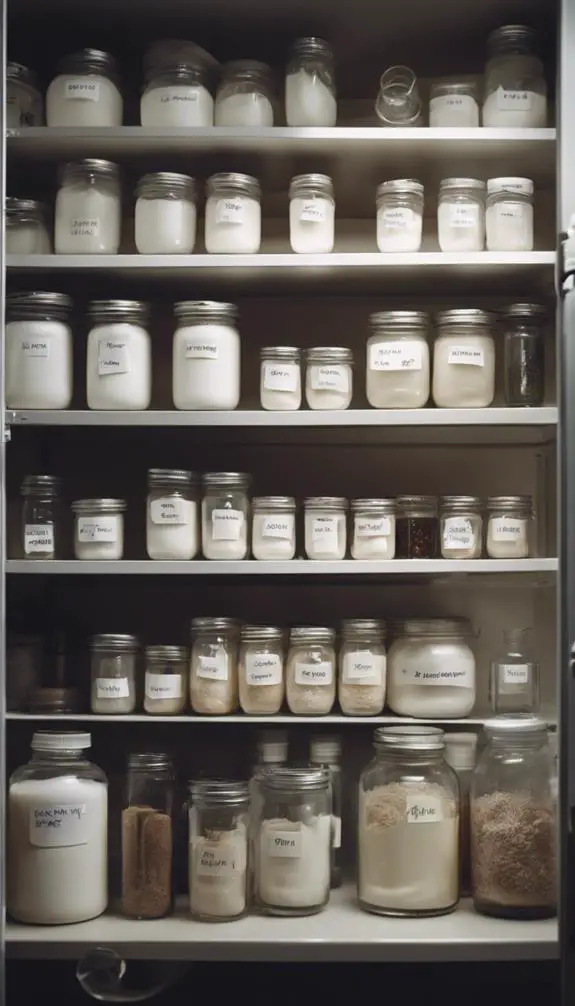
Proper storage and handling of your emergency baby formula are crucial to guarantee its safety and effectiveness.
You must store the formula in an airtight container, away from direct sunlight and moisture. Check the formula expiration date regularly to confirm it remains safe for your baby's consumption.
When handling the formula, wash your hands thoroughly with soap and water, and avoid contaminating the formula with utensils or other objects.
Always label the container with the date and time of preparation, and discard any leftover formula after 24 hours.
Prioritize baby safety by following these storage and handling precautions to confirm your emergency formula remains a reliable and healthy option for your little one.
Feeding and Monitoring Baby

Your baby's tiny hands grasp the bottle, and their eyes lock onto yours as they prepare for a feeding session.
As you sit down to feed your baby, make sure the room is calm and quiet, allowing them to focus on eating.
For proper baby feeding, prepare the bottle according to the emergency formula recipe, and test the temperature by dripping a few drops onto the inside of your wrist.
If it feels comfortable, it's ready for your baby.
Hold your baby upright and slightly reclined, making sure the bottle is at an angle to prevent air from entering their mouth.
Monitor your baby's cues, such as turning their head away or pushing the bottle, to know when they're full.
Common Formula Substitutions
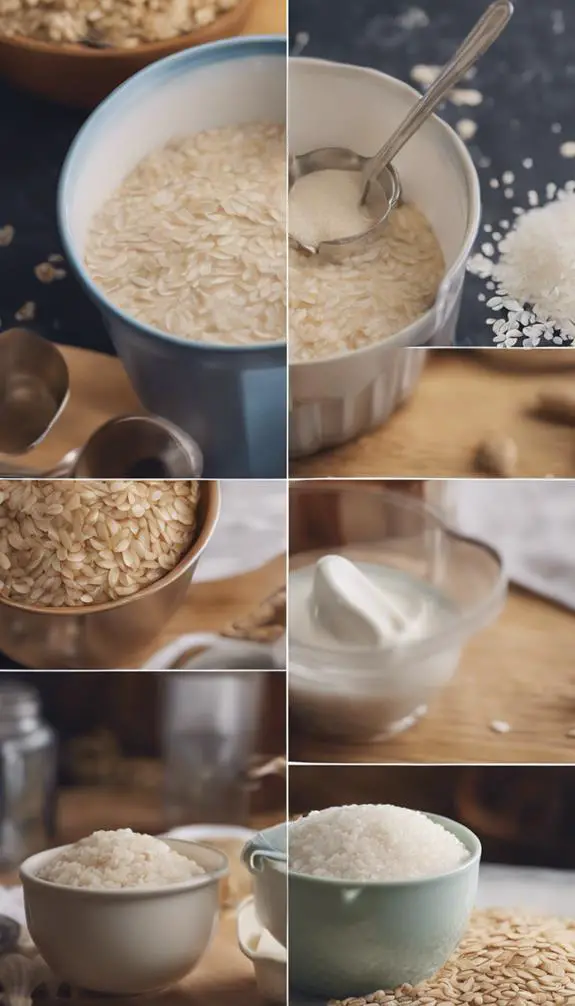
As you prepare emergency baby formula, it's reassuring to know that you can make substitutions in a pinch.
When you're in a bind, you can use formula alternatives to guarantee your baby receives the necessary nutrition.
For instance, if you're out of formula, you can mix 1 cup of cow's milk with 1 tablespoon of vegetable oil and 1 teaspoon of Karo syrup. This combination provides essential fatty acids and carbohydrates for baby nutrition.
Another option is to use a mixture of evaporated milk, water, and a small amount of sugar.
Long-Term Formula Alternatives
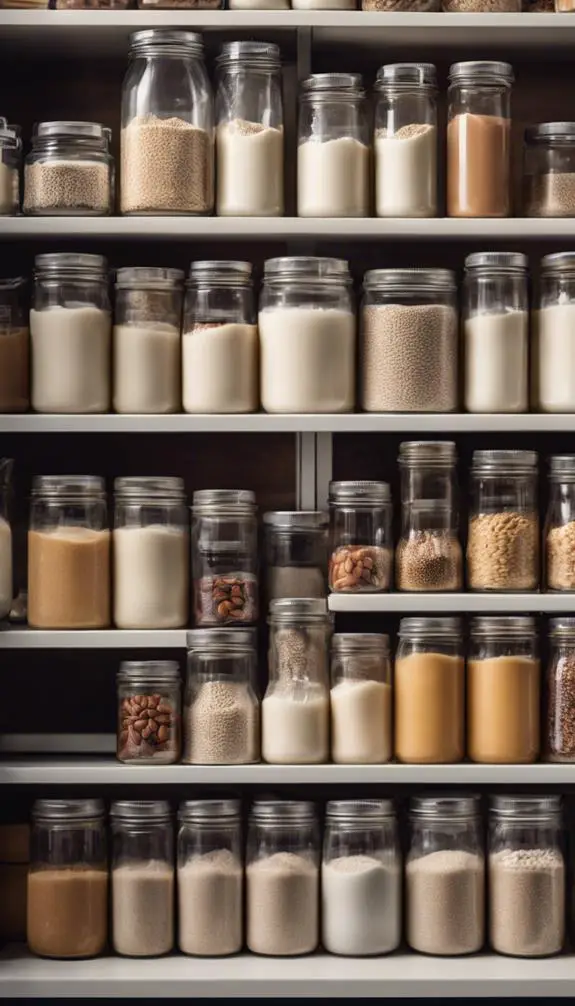
When it comes to long-term formula alternatives, you'll want to explore options that provide a balanced mix of nutrients for your baby's growth and development.
You may consider consulting with a pediatrician or a registered dietitian to determine the best formula options for your baby's specific needs.
Homemade recipes can be a viable alternative, but it's vital to verify the recipe you choose is nutritionally complete and safe for your baby.
Look for recipes that use whole, nutrient-dense ingredients and avoid added sugars, preservatives, and other unwanted additives.
With the right guidance and resources, you can find a long-term formula alternative that provides your baby with the nutrients they need to thrive.
FAQs
Can I Use Tap Water to Make Emergency Baby Formula?
When mixing emergency baby formula, you're right to wonder if tap water is safe. However, you should use boiled water to guarantee the highest water quality, as tap water may contain impurities that can harm your little one.
How Long Does Homemade Formula Last in the Fridge?
When you prepare a fresh batch, you'll want to prioritize proper formula storage. You can safely store your homemade formula in the fridge for up to 24 hours, but it's best to use it within 12 hours for peak nutrition and safety.
Is It Safe to Use Expired Ingredients in a Pinch?
When you're in a pinch, you wonder if expired ingredients are safe to use, but don't risk it – shelf life and expiration dates exist for a reason; using expired goods can compromise quality and safety, so prioritize freshness for your baby's well-being.
Can I Make Emergency Formula for Premature or Twins?
When caring for premature babies or twins, you'll need to ponder their unique needs. Premature babies require more calories and protein, while twin bonding benefits from simultaneous feedings; you'll need to adjust your emergency formula recipe accordingly to guarantee their peak health and development.
Will My Breastfed Baby Reject the Bottle After Using Formula?
You're concerned your breastfed baby will reject the bottle after using formula, but don't worry, with gentle introduction, you can minimize bottle aversion and nipple confusion; your baby will adapt, and you'll maintain freedom in feeding choices.
Conclusion
You've successfully created an emergency baby formula that mimics the nutritional profile of commercial formula. Remember to always prioritize your baby's health and well-being during a formula shortage. Monitor their progress closely, and if you notice any signs of distress or discomfort, consult with your pediatrician immediately. With proper preparation and care, this emergency formula can help bridge the gap until a commercial formula becomes available again.

